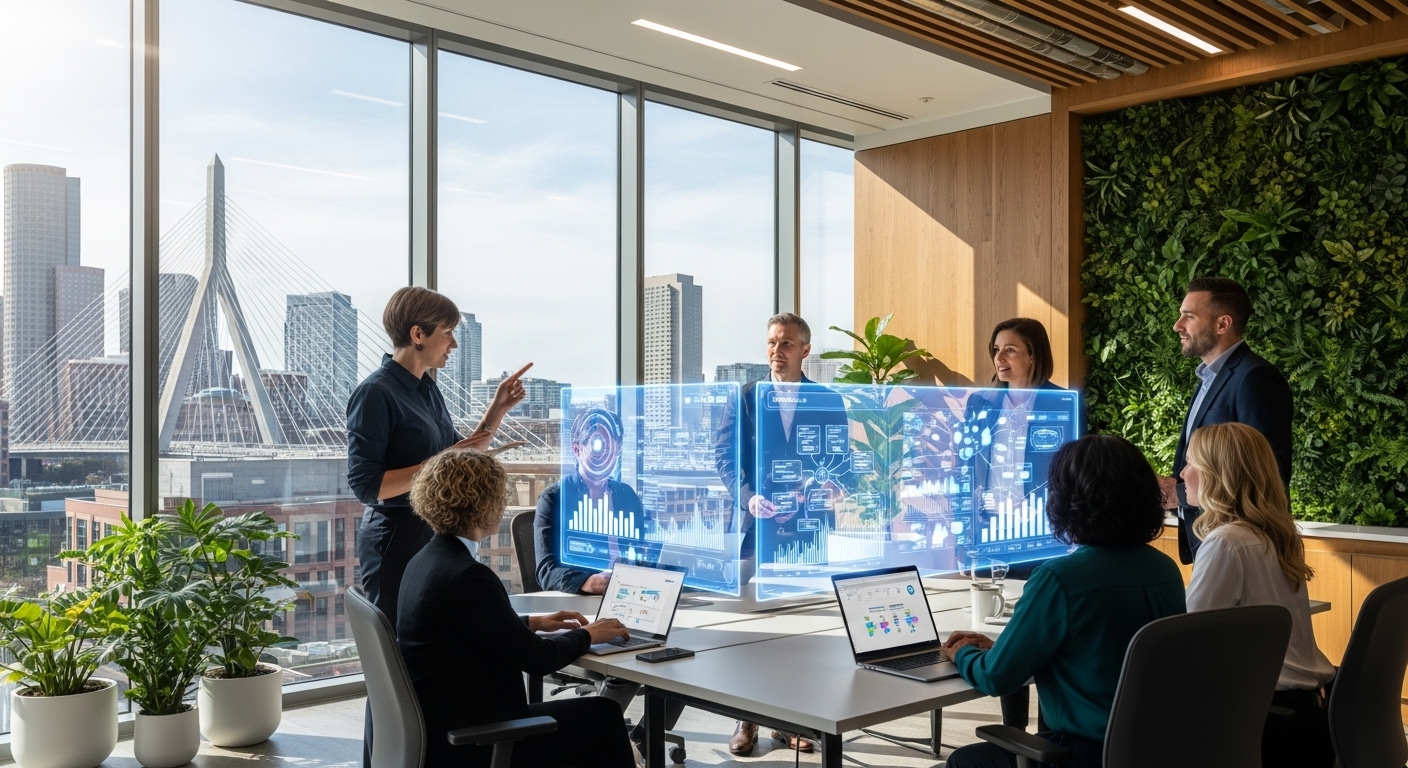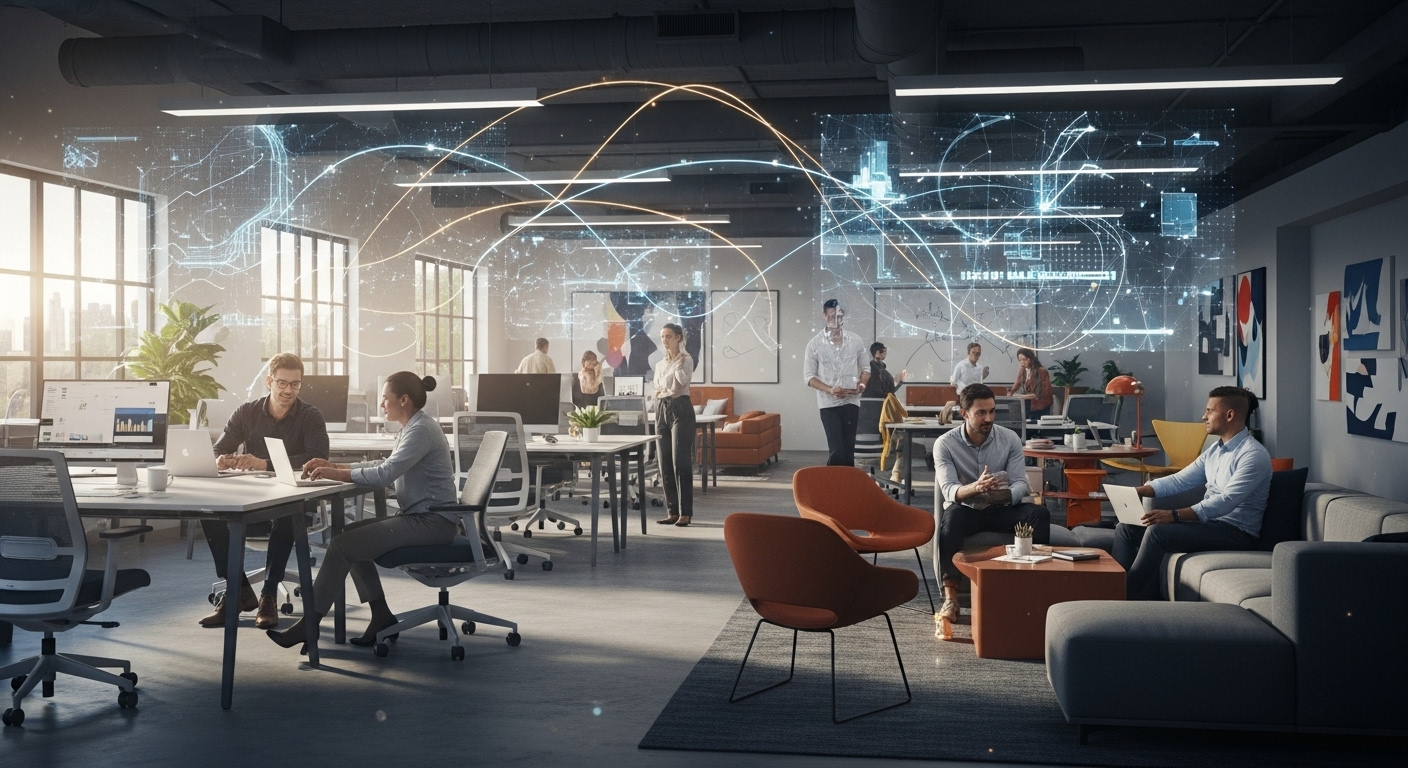In an era where the nature of work is being fundamentally reimagined, some cities emerge as living laboratories for the future. With its unparalleled blend of academic prowess, technological dynamism, and historical resilience, Boston stands at the forefront of this transformation. Workplace innovation is no longer a buzzword confined to Silicon Valley startups; it’s a critical strategy for survival and growth. This goes beyond installing ping-pong tables or offering free snacks. True innovation is woven into the cultural fabric of an organization—it’s about fostering psychological safety, leveraging technology with purpose, and designing environments that adapt to human needs. For companies in New England’s anchor city, the challenge and opportunity lie in harnessing the unique local ecosystem to build workplaces that are not just productive, but also magnets for the world’s brightest minds. This article explores the key pillars of workplace innovation, examining how they are taking shape in the Boston landscape and offering a blueprint for any organization aspiring to lead in the future of work, from fostering a fearless culture to architecting the hybrid-first spaces that define modern business.
The Cultural Bedrock: Fostering Psychological Safety for Fearless Ideas
The engine of innovation doesn’t run on technology alone; it runs on trust. Psychological safety—the shared belief that a team is safe for interpersonal risk-taking—is the single most critical ingredient for a culture where new ideas can flourish. When employees fear ridicule, punishment, or career jeopardy for speaking up, suggesting a nascent idea, or admitting a mistake, creativity grinds to a halt. In its place, you find risk aversion, groupthink, and a performative consensus where everyone agrees but no one is truly committed. Fostering this safety requires intentional effort from leadership. It begins with modeling vulnerability, where leaders openly acknowledge their own errors and uncertainties. It is reinforced through active listening, where every voice is given weight, and curiosity is prized over judgment. This means training managers to coach rather than command, asking powerful questions instead of just providing answers. Companies leading the charge are moving away from purely punitive performance reviews and toward continuous feedback loops that focus on growth and learning. They celebrate not just successes, but also intelligent failures—experiments that didn’t yield the expected result but provided invaluable lessons. This cultural shift is paramount in a hyper-competitive talent market, creating an environment where top performers don’t just come to work, but come to contribute their most authentic, creative selves.
Leveraging the Local Ecosystem: From Kendall Square to the Seaport District
A company’s innovative capacity is often a reflection of its environment. Few places offer a more fertile ecosystem for growth than the Greater Boston area. The region is characterized by a unique ‘innovation osmosis,’ where ideas and talent flow freely between world-class academic institutions like MIT and Harvard, a thriving biotech and life sciences sector, a robust venture capital community, and a dense network of both scrappy startups and established tech giants. Thriving companies actively tap into this ecosystem. They don’t operate as isolated islands; they build bridges. This includes forming research partnerships with universities, participating in local incubators and accelerators like MassChallenge, and hosting industry meetups that bring diverse minds together. The physical layout of the city itself encourages this cross-pollination. The concentration of talent and capital in hubs like Kendall Square and the Seaport District creates a powerful network effect. For businesses located in Boston, this proximity isn’t just a geographical convenience; it’s a strategic asset. It means access to a constant stream of cutting-edge research, a deep and diverse talent pool accustomed to tackling complex problems, and the serendipitous encounters that often spark the next big breakthrough. By intentionally engaging with this vibrant local network, organizations can amplify their own innovative efforts, staying ahead of market trends and co-creating the future alongside the brightest minds in their fields.
Designing for Disruption: The Rise of Agile and Hybrid Workspaces
The office is no longer just a container for employees; it’s a strategic tool for collaboration, culture-building, and deep work. The one-size-fits-all model of open-plan offices or rigid cubicle farms is obsolete. The future of workplace design is agile, flexible, and human-centric, engineered to support a hybrid workforce. Innovative companies are reimagining their real estate footprint not as a daily requirement, but as a ‘center of gravity’—a destination for specific, high-value activities. This ‘hub-and-spoke’ model treats the office as a place for immersive collaboration, team-building, client presentations, and focused tasks that benefit from specific resources. The design of these spaces reflects this functional shift. You’ll find fewer assigned desks and more ‘zones’ tailored to different work modes: quiet libraries for deep concentration, dynamic project rooms with digital whiteboards for brainstorming, comfortable lounges for informal connection, and acoustically sealed pods for private calls. Technology is the invisible thread that ties this all together, with seamless booking systems for desks and rooms, and video conferencing technology that creates an equitable experience for both in-person and remote attendees. This approach gives employees the autonomy to choose the environment that best suits their task, boosting both productivity and satisfaction. It’s a strategic pivot from policing presence to empowering performance.
The Leadership Imperative: Steering the Ship Through Constant Change
In an environment of constant flux, leadership itself must innovate. The traditional top-down, command-and-control style is an anchor in the fast-moving currents of the modern economy. Today’s most effective leaders are not charismatic visionaries who have all the answers; they are architects of culture and catalysts for empowerment. Their primary role is to create the conditions for their teams to do their best work. This requires a shift in mindset from being a ‘director’ to being a ‘gardener’—cultivating the environment, providing the right nutrients (resources, support, clear goals), and then stepping back to let the team grow. This style of leadership is built on empathy and humility. It involves actively seeking out diverse perspectives, especially dissenting ones, to challenge assumptions and avoid blind spots. Leaders in innovative organizations in Boston and beyond are championing a culture of experimentation, where they give their teams the autonomy to test new approaches and the permission to fail without fear of reprisal. They are relentless in removing bureaucratic friction and smashing organizational silos that impede cross-functional collaboration. Ultimately, they understand that their success is not measured by their own individual contributions, but by their ability to multiply the impact of their team. They lead with questions, not answers, and build resilience by distributing decision-making power throughout the organization.
Beyond the Gadget: Integrating AI and Smart Tech Meaningfully
Workplace technology has moved far beyond email and spreadsheets. The rise of Artificial Intelligence (AI) and the Internet of Things (IoT) presents a profound opportunity to create more responsive, efficient, and human-centric workplaces. However, the key to successful integration is to focus on purpose, not just novelty. Instead of chasing every new gadget, innovative companies are asking: ‘What problem are we trying to solve?’ Smart technology finds its best application when it removes friction from the employee experience. For instance, IoT sensors can provide real-time data on workspace utilization, allowing facility managers to optimize layouts and energy consumption, while also helping employees find available desks or meeting rooms through a simple app. AI-powered tools can automate repetitive, low-value tasks—like scheduling meetings, transcribing notes, or summarizing long documents—freeing up employees to focus on creative and strategic work. In collaborative settings, AI can facilitate more inclusive meetings by providing real-time translation or sentiment analysis to ensure all voices are heard. The goal is not to use technology to monitor or micromanage, but to augment human capability. It’s about building an intelligent ecosystem that anticipates needs and seamlessly supports different modes of work, whether an employee is in the office or connecting remotely.
Measuring What Matters: New Metrics for an Innovative Workplace
What gets measured gets managed. If an organization’s primary metrics are still rooted in the industrial era—like hours logged or lines of code written—it will inevitably stifle the very creativity it claims to want. Innovating the workplace requires innovating how we measure success. Forward-thinking companies are shifting from tracking inputs to measuring outcomes and impact. Instead of focusing on simple productivity, they look at metrics that reflect a culture of innovation. This can include ‘idea velocity,’ which tracks the number of new ideas submitted and the speed at which they move from concept to prototype. Another key metric is the rate of cross-functional collaboration, measuring how often teams from different departments work together on projects, as this is often where breakthrough innovations occur. Employee engagement surveys can be adapted to specifically gauge psychological safety and whether employees feel empowered to take risks. Even project post-mortems can be a source of data, analyzing not just the success or failure of an initiative, but the quality of the learnings gained. The most innovative companies in Boston are developing balanced scorecards that combine these leading indicators of innovation with traditional lagging indicators of financial performance, creating a more holistic view of organizational health and future-readiness.
Ultimately, building an innovative workplace is not a one-time project but a continuous journey of evolution. As we’ve seen, it’s a multi-faceted endeavor that extends from the psychological safety of the team to the architectural design of the office. It demands a new kind of leadership—one that prioritizes empowerment over control—and a strategic approach to technology that augments human potential rather than merely monitoring it. Boston provides a compelling case study of how a rich ecosystem of academia, industry, and talent can create a fertile ground for this evolution. The city’s leading companies understand that their most valuable asset is the collective intelligence and creativity of their people. By fostering a culture of fearless experimentation, designing flexible and purpose-driven spaces, and leveraging the collaborative energy of their environment, they are not just winning the war for talent; they are actively building the future of work. The principles driving their success—trust, agility, and a human-centric focus—offer a powerful and universal model for any organization seeking to thrive in an age of perpetual change. The future belongs to those who are willing to innovate not just their products, but the very way they work.





